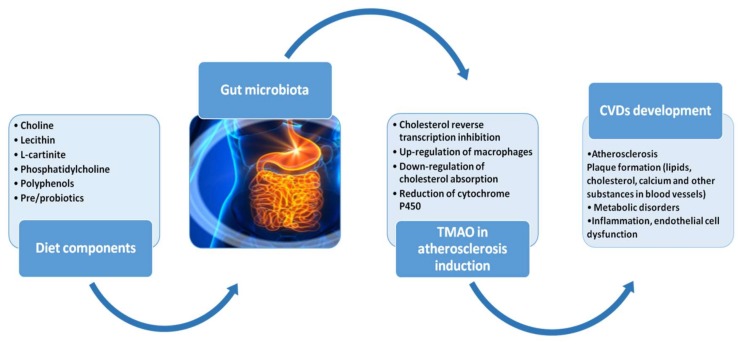Figure 1.
Figure displays the role of gut microbiota in development of atherosclerosis and subsequent CVDs. Dietary components can affect gut microbiota contributing to its dysbiosis. Lecithin, phosphatidylcholine, l-carnitine are metabolized into choline, which is converted to trimethylamine (TMA) by the gut microbiota. TMA is oxidized into trimethylamine N-oxide (TMAO) by hepatic flavin monooxygenases (FMO3). TMAO can accelerate atherosclerosis by inhibiting reverse cholesterol transport and accumulating macrophage cholesterol, resulting in atherosclerotic plaques formation composed of necrotic cores, calcified regions, accumulated modified lipids, inflamed smooth muscle cells, endothelial cells, leukocytes, and foam cells in blood vessels. Specific treatments including usage of pro/prebiotics and dietary polyphenols can improve gut dysbiosis and prevent from atherosclerosis.

